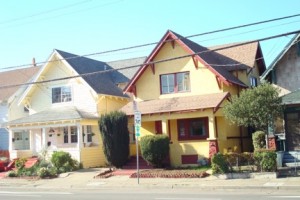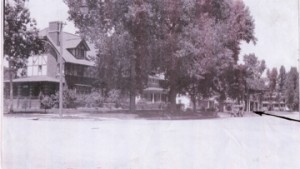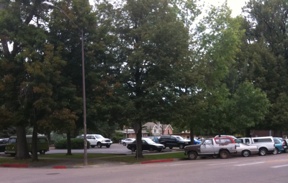Visiting Oakland, CA
 A couple months ago, I visited a friend of mine in Oakland, CA. This trip was a bit different from other visits I have made to metropolitan areas. Usually I stay in a hotel, and visit the touristy spots and roam around in a rental car usually looking specific neighborhoods or development projects. This time, I stayed with my friend and did all of our touring using public transportation, or our own feet to get around. One day, we walked around a significant portion of Berkeley, visiting the campus, The Berkeley Rose Garden, and neighborhoods in between. I will have to admit, while I have been to the bay area several times over the years, I have never spent any real time in Oakland or Berkeley. Of course, I have heard all the rumors about how Oakland is rough and tumble, the gangs, the high crime rate, etc. I admit, from the places I have lived, I have been pretty sheltered, not really exposed to a wide range of diversity of ethnicities or lifestyles. Oakland and Berkeley are very diverse cities, having huge variety of ethnic populations. Touring the UC Berkeley campus I quickly figured out that being a white male, I was a distinct minority. Not that this bothered me at all mind you, it just opened my eyes some more. One thing that I did really appreciate though, was the overall tolerance and acceptance of not only the diversity, but for different lifestyles. I saw openly gay and lesbian couples roaming around, mixed race couples, and about everything else too. I found it all to be refreshing and enjoyable. In my opinion all communities should be this way.
A couple months ago, I visited a friend of mine in Oakland, CA. This trip was a bit different from other visits I have made to metropolitan areas. Usually I stay in a hotel, and visit the touristy spots and roam around in a rental car usually looking specific neighborhoods or development projects. This time, I stayed with my friend and did all of our touring using public transportation, or our own feet to get around. One day, we walked around a significant portion of Berkeley, visiting the campus, The Berkeley Rose Garden, and neighborhoods in between. I will have to admit, while I have been to the bay area several times over the years, I have never spent any real time in Oakland or Berkeley. Of course, I have heard all the rumors about how Oakland is rough and tumble, the gangs, the high crime rate, etc. I admit, from the places I have lived, I have been pretty sheltered, not really exposed to a wide range of diversity of ethnicities or lifestyles. Oakland and Berkeley are very diverse cities, having huge variety of ethnic populations. Touring the UC Berkeley campus I quickly figured out that being a white male, I was a distinct minority. Not that this bothered me at all mind you, it just opened my eyes some more. One thing that I did really appreciate though, was the overall tolerance and acceptance of not only the diversity, but for different lifestyles. I saw openly gay and lesbian couples roaming around, mixed race couples, and about everything else too. I found it all to be refreshing and enjoyable. In my opinion all communities should be this way.
Oakland and Berkeley both have a significant population of older working class homes, of all vintages. Oakland also has one of the oldest and strongest historic preservation programs in the country. Over the coming days, I will be posting several pics and descriptions of what I saw, both old and new. These posts will be organized by subject, so it will be easier to find images.







